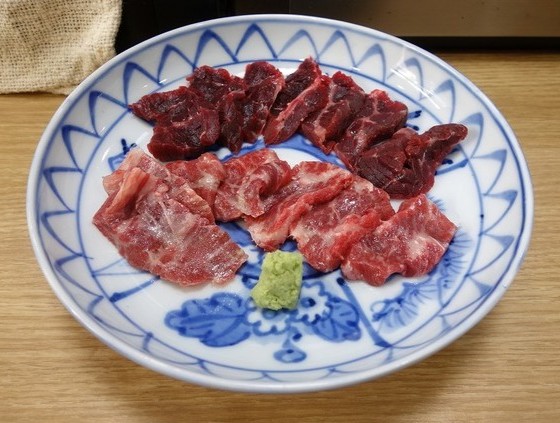
It has been six years since Japan withdrew from the International Whaling Commission (IWC) and resumed commercial whaling. Many consumers had hoped that whale meat would become cheaper and appear on dinner tables. This is because whale meat is a nutritious and versatile ingredient that can be used in a variety of dishes. However, the amount of whale meat available in circulation has decreased compared to the era of research whaling. What exactly were the Japanese government and the whaling industry trying to protect?
On the other hand, the three countries strongly pushing for a “whale hunting ban” in Japan are the United States, Australia, and New Zealand. Why is Japan not allowed to engage in commercial whaling when Iceland and Norway are permitted to do so? Such inconsistencies also exist.
In fact, very few Japanese people actually want to eat whale meat. According to a survey by Greenpeace, 95% of Japanese people do not particularly want to eat whale meat. It is said that the average annual consumption of whale meat per person in Japan is now 40 grams. It was quite a challenge to find images of whale sushi in our saved files.
In other words, whales may now be used as political and economic tools, transcending issues such as human food and the environment.
To put it bluntly, it may be the fault of a few members of parliament elected from constituencies with many whaling-related interests and hundreds of bureaucrats who do not want to lose their budgets.
This article is simply to show that whale sushi exists as part of Japanese food culture. Although rare today, whale occasionally appears as sushi neta (topping). So, what kinds of whale are actually used for sushi? Let’s take a closer look.
1. Minke Whale (Balaenoptera acutorostrata Lacépède, 1804)
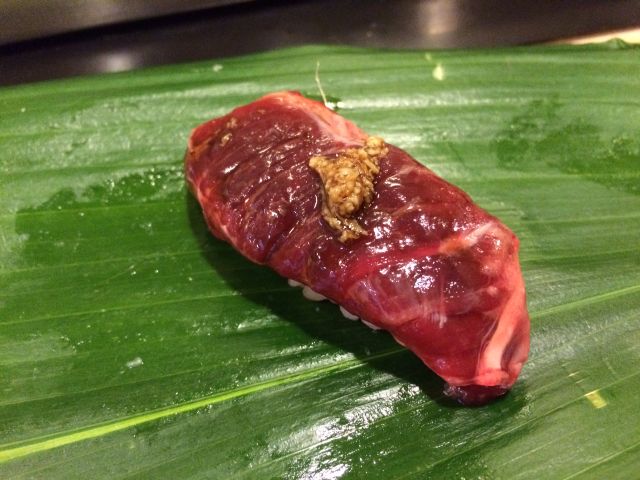
Minke whales in the northern hemisphere are about 8 meters long. Seen from above, their heads are pointed at the tip. There is a white patch on the upper center of the pectoral fins. The dorsal fin, about 30 cm high, is located toward the rear of the body and is often clearly sickle-shaped. The back is black, the sides are gray with a blurred pattern, and the lower jaw and abdomen are white.
It generally feeds on krill, small squid, and fish. It filters its food through bristle-like baleen plates, made of keratin. The Japanese name for the minke whale is higekujira, which means bearded whale.
-
Description: A relatively small baleen whale, measuring about 7–10 meters in length.
-
Use: The most commonly caught species in Japan’s commercial whaling, widely utilized for sushi toppings, sashimi, and bacon-style preparations.
-
Flavor: The red meat is tender with little odor, making it one of the more approachable types of whale meat.
2. Bryde’s Whale (Balaenoptera edeni Anderson, 1879)

Bryde’s Whale is a close relative of the Sei whale. It was named “Nitarikujira” (meaning “similar whale”) because it resembles the Sei whale. It grows to a maximum length of about 15 meters and is slightly smaller than the Sei whale.
-
Description: A medium-sized baleen whale, usually 12–15 meters long, larger than the minke whale.
-
Use: Its red meat is served as sushi or sashimi, while fatty cuts and tail meat are often cooked.
-
Flavor: The red meat has a richer taste with a pronounced umami and iron-like character.
3. Sei Whale (Balaenoptera borealis Lesson, 1828)
Sei whales are baleen whales belonging to the family Balaenopteridae. They migrate across the open ocean in schools of sardines, feeding on them, which is how they got their name.
Two subspecies are recognized: the northern hemisphere subspecies (B. b. borealis) and the southern hemisphere subspecies (B. b. schlegelii). They are distributed in the southern Indian Ocean, the North Atlantic and South Atlantic, and the North Pacific and South Pacific.
Its body is slender and spindle-shaped, with a sickle-shaped dorsal fin. The dorsal color is dark blue, the ventral color is light blue, and there are blurred patterns in between. The head is V-shaped, enabling it to swim at high speeds. The maximum body length is approximately 18 meters.
-
Description: A baleen whale that grows 12–18 meters long. In the past, it was more frequently caught, but today only limited numbers are harvested.
-
Use: The lean red meat is used for sushi or sashimi, while fattier portions are processed into bacon or fried dishes.
-
Flavor: The meat is tender and relatively mild, with a clean, elegant taste.
4. Sperm Whale (Physeter macrocephalus Linnaeus, 1758)
Sperm whales are distributed worldwide from the Arctic to the Antarctic, with the largest populations found in deep ocean waters. Male sperm whales grow to a length of 15 to 20 meters and weigh between 40 and 60 tons. Their body color is blackish gray, but it becomes whiter with age. In particular, the head tends to become whiter. The dorsal fin is mountain-shaped, with several ridges extending from the rear toward the tail fin. The surface of the body, except for the head, is rough and uneven.
-
Description: A toothed whale and one of the largest whale species, reaching 15–20 meters or more in length.
-
Use: Rarely used as sushi. Instead, its distinctive fatty tissue is made into “toothed whale bacon” or other processed foods.
-
Flavor: The fat has a unique aroma and a very rich, heavy taste.
Types of whale meat
Saezuri (さえずり)
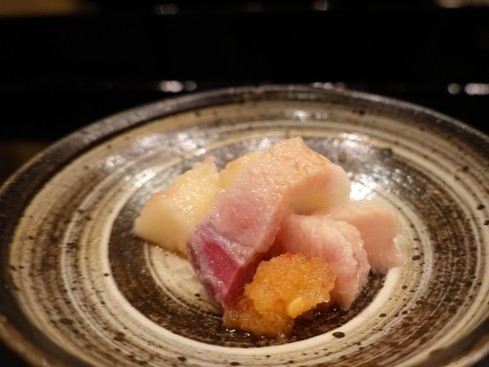
Saezuri is very fatty, and the taste and texture differ between the root and tip of the tongue. It has a deep umami flavor and is used in simmered dishes and oden. It is one of the most popular delicacies of whale meat.
Onomi (尾の身)
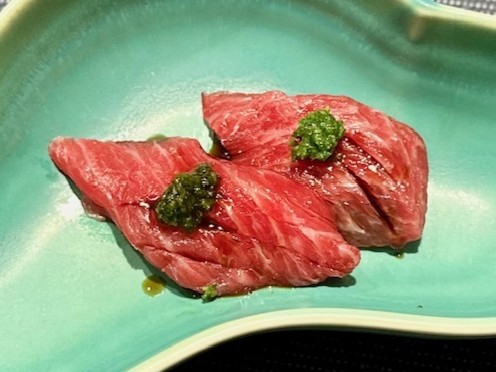
The back section from the dorsal fin to the tail, with fat marbled like snowflakes (shimofuri). Considered the most delicious part of whale meat, it is also known as whale Otoro.
Unesu (畝須)
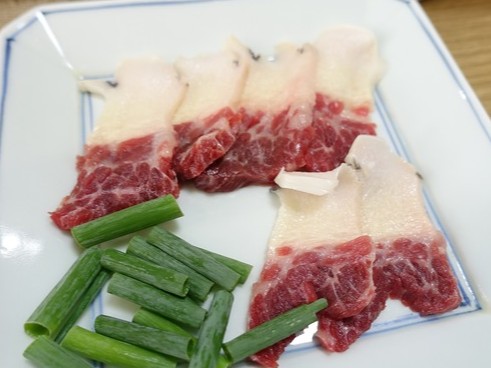
The white, accordion-shaped part running vertically from the lower jaw to the navel is called Une, and the red inner part is called Sunoko. These two parts together form Unesu. It has a soft, gelatinous texture and is one of the most popular whale meat cuts, cherished for generations.
Bacon (ベーコン)
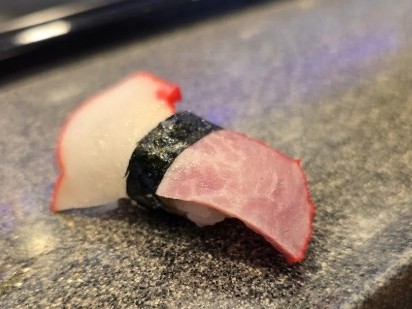
Bacon is a processed food made by salting and smoking the part called Unesu.
For reference.